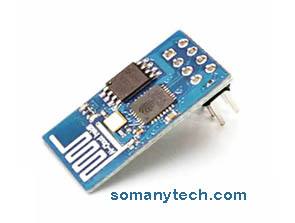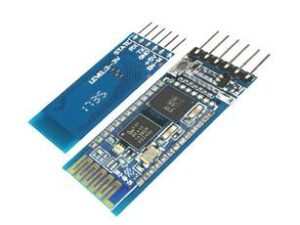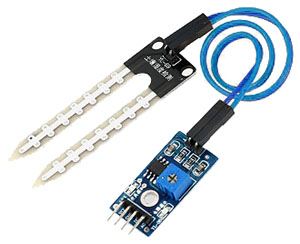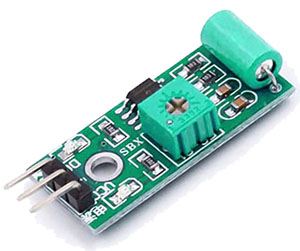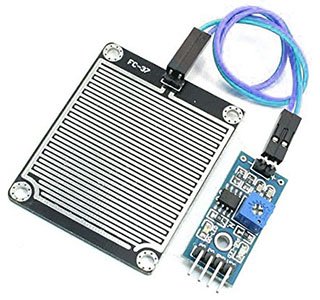All 29+ Arduino Sensors Types, Arduino Components List & Modules
It is found that a more and more Arduino beginners and enthusiast are facing difficulties finding all the Arduino sensors and Arduino components/ modules list in a one place, so that, they find it easier to decide what sensor to use in their projects and what are the functions and detail features of Arduino starter kit.
And thus, to the many requests by our website visitor and DIY community, we’ve collectively put the Arduino sensors Types, Working, Applications and modules list in this post.
There are various types of sensors and modules from very simple to interface & code, to very complex to interface & long to codes. In below list of Arduino sensors, we’ve mentioned what is the use of each module and detailed feature of each of them.
Difference between Arduino Sensors and Arduino modules?
Let’s talk about sensors, so what are sensors? Sensors are nothing but the device that sense the physical world and generate the analog or digital signal related to that particular quantity so that it can be processed by computers and conclude it for evaluation by human being.
So Modules are nothing but these sensors with supporting circuitry mounted on a PCB to enhance its capability and usability. They maintain certain form factor so that assembling the hardware becomes simpler.
Modules are generally provided with a nob (potentiometer) to adjust the sensitivity of the sensors, also the current limiting resistor and header pins to make it re-attachable.
Not necessarily all modules are sensors, but it could be some output devices or external circuit like trans-receivers, (LCD) liquid crystal display, 7-segment display, servo motor, multi color led, buzzer, etc
Ultrasonic Module HC-SR04
Application: To determine the range/ distance of an object without contacting it, obstacle detection.
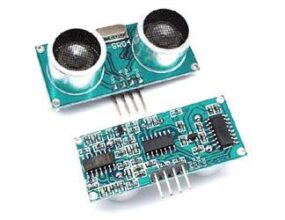
Description/ Application:
The ultrasonic sensor HC-SR04 sends and detects high frequency sound waves. The distance from an object is calculated with the unit of time taken by sound waves to travel the distance and come back, it’s called sonar technique. If velocity of sound = 340 m/s, then, Total distance = (pulse time × velocity of sound) / 2
Feature & Specifications:
- Requires I/O trigger of min 10us for high level signal
- Operates at sound frequency of 40 kHz, range up to 0.4 meter at 15 degree
- Operating at 5V, ~15mA
Full Arduino Kit Components list & Arduino Sensor list and Parts list in tabular format.
IR Arduino sensors (Infrared Obstacle Avoidance Sensor Module)
Application: For switching application/ obstacle detection
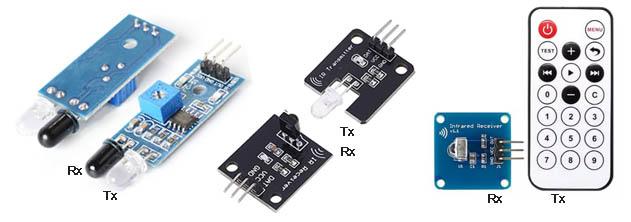
Description:
The Infrared emitted by the transmitter hits an obstacle, and some returned IR light received by the receiver anticipate an obstruction. Often used in robots for detecting objects nearby or to avoid obstacles.
They come in three to four types of form factor, one with the transmitter and receiver IR LEDs together in the same module, one with individual IR transmitter and IR receiver, and IR receiver with IR Remote.
Feature & Specifications:
- It has a sensing distance of 2-30 cm, detection angle 35°
- Powered with 5V, generally operates at 38kHz
Click here for DIY simple Arduino Projects Idea for beginner full list
Microphone Sensor (Analog sound sensor module)
Application: Sound detection, Audio recording
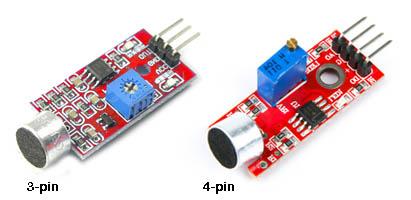
Description:
They come in two types of form factor. Apart from Vcc & Gnd, one module has two outputs AO (analog output) & DO (digital output), and other with single digital output DO.
Upon reaching a certain threshold of sound intensity, the digital output sends a high signal. That threshold can be set by a potentiometer nob present on the module. The AO pin gives analog sound signal for further processing.
Feature & Specifications:
- Power indicator & Sensitivity adjustment
- Pin AO is used for direct raw analog sound signal
- Pin DO is used for digital output high when sound reaches certain limit
Photo-resistor Sensor Module for Light Detection (LDR- Light Dependent Resistor)
Application: Light detection, Darkness detection, light dimming
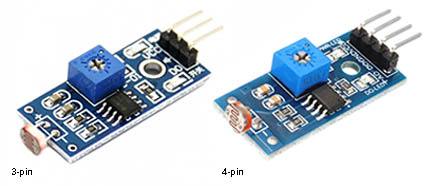
Description:
This module is equipped with light dependent resistor (LDR). The resistance of LDR changes depends on amount of light falls on is surface.
They come in two form factor (3pin and 4pin). Apart from Vcc & Gnd, one module comes with single digital output DO, and other has two outputs AO (analog output) & DO (digital output). Upon reaching a certain intensity of light, the digital output sends a high signal. That threshold light intensity can be adjusted via a potentiometer present on the module.
You can build an automatic garden/ streetlight project.
Feature & Specifications:
- Operating at 5V, it has digital switching outputs (0 or 1) at DO
- The AO (analog voltage output) depending on light intensity
- A LDR resistance vary from few MΩ to few KΩ for complete darkness to full sunlight
MQ-2Gas Sensor Module Smoke Methane Butane Detection
Application: For detection & sensing of, methane, alcohol, fire smoke, propane, hydrogen, methane, LPG and carbon monoxide concentrations in the closed environment
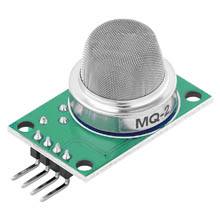
Description:
MQ2 is one of the commonly used gas sensors, it gives output by changing its resistance value. It has a Chemiresistor (sensing material), when the Gas comes in contact with it, the resistance of chemiresistor is changed, which detects the type of Gas by measuring the resistance of the sensing material.
It comes in 4-pin form factor. Other than Vcc & Gnd, one module comes two outputs analog and digital trigger.
Feature & Specifications:
- Pin DO provide a digital signal for presence of combustible gases set via adjusting nob.
- Pin AO provides analog output voltage in proportional to the concentration of smoke/gas (read datasheet for exact values for respective gas)
- The Pre-heat time of about 30sec (works properly after this time)
- Operating at 5V, power consumed <800mw
Digital Thermal Sensor Module (Temperature Sensor Module)
Application: for detecting the temperature of the surrounding environment and temperature control

Description:
This module comes with NTC thermistor sensor. It is thermally variable resistor, means the resistance of the sensor changes proportional to the surrounding temperature, thus temperature is determined accordingly.
It comes in two form factor (3pin and 4pin). Apart from VCC & GND, one with digital output DO, and other with two outputs AO & DO. You can change the temperature detection threshold for digital output with adjustable nob.
Feature & Specifications:
- NTC thermistor & sensor sensitivity
- The module temperature detection range of 20- 80℃
- Adjustable temperature distribution bit detection threshold
IR Infrared Flame Detection Sensor Module
Application: To detect fire/ flame in nearby area, fire alarm
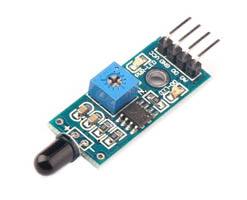
Description:
IR infrared flame detector module is installed with a photo-tansistor/ photo diode which is sensitive to the flame. Generally, it responds to a flame (a source of infrared light) of a wavelength in the range of ~760 nm to ~1100 nm.
It also comes with 3 pin and 4 pin module for different digital only and both analog and digital purpose.
Feature & Specifications:
- Detection angle of about 60 degrees,
- Particularly designed to sensitivity to the flame spectrum only
- Operates at 3.3V- 5.0V at ~15mA
- Pin AO pin for analog voltage output depending on flame intensity
- Pin DO pin for digital trigger after threshold level of detection
list of website to get electronics components online
DHT11 Temperature and Humidity Sensor
Application: mainly for Humidity sensing
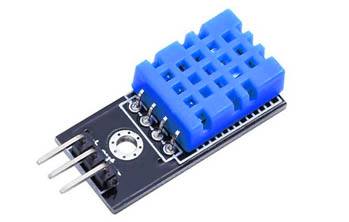
Description:
DHT11 is digital temperature and humidity sensor gives digital serial data signals output with a calibrated two in one temperature and humidity sensor.
This module includes a resistive-type humidity measurement component and an NTC (negative temperature coefficient) temperature measurement component. Mostly used to measure temperature and humidity in your room or outside area.
Feature & Specifications:
- DHT11 element is strictly calibrated, means high accuracy and reliability
- High-performance 8-bit micro-controller on board
- Can sense humidity range from 20{42041a7992ac3be9e9e29c856254fb498d8c7935d7cf8512da6802e8688e734a} to 90{42041a7992ac3be9e9e29c856254fb498d8c7935d7cf8512da6802e8688e734a}
- Can sense the temperature range from 0 to 50℃
- Check DHT11 datasheet here
RF 433MHz Transmitter/Receiver
Application: Remote control, automation, sensor reporting
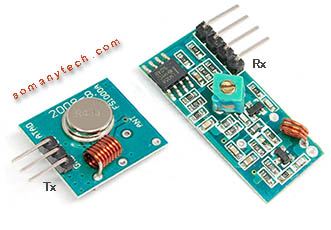
Description:
Whether to send data from one microcontroller to another or to control remote devices, the easy way to do it is using the 433MHz link modules.
These Rf modules are widely used by Arduino users for a variety of applications that require wireless control of some robot or some remote action over a small distance It can have a range of 3 meters without antenna, and up to 100 meters with antenna.
Feature & Specifications:
- Max range up to 100 meters
- Operating voltage of 5V at 3.5mA for both Tx & Rx
- Tx freq: 433.92MHz & Rx freq: 433MHz
ESP8266 WiFi Module
Application: Home application and automation, sensor network, smart appliance
Description:
The ESP8266 Wifi module is a standalone WiFi module that is made to work as a WiFi adapter, with which you can make your Arduino/ any micro-controller an wireless IoT device.
It enables wireless internet access to/ from any microcontroller with its serial communication (UART interface). It can do anything with it that a IoT device can do.
Feature & Specifications:
- Operates at 2.5v to 3.6V at ~80 mA
- 802.11 b/g/n support (2.4 GHz)
- 802.11n support, up to 72.2 Mbps
- On board antenna
Bluetooth Module for Arduino (HC-06 RS232 TTL module)
Application: Wireless control of robot with mobile phone
Description:
There are lots of Bluetooth module available for Arduino in the market like HC-05 HC-06 RS232 TTL, etc. To create a wireless communication channel with a robot, you will need a Bluetooth module and an Arduino board.
It is one of the most commonly used module for wireless control of robots after RF 433MHz Trans-receiver.
Feature & Specifications:
- Low Power 1.8V Operation, 1.8 to 3.6V I/O
- Range up to 9 meters (30ft) for both transmission and reception
- The UART interface with programmable baud rate
- Up to +4dBm RF transmit power
Soil Hygrometer Detection/ Module Soil Moisture Sensor
Application: Automation of home garden and watering
Description:
The soil hygrometer module is a simple water sensor that is generally used to detect moisture in the soil. Soil moisture data is critical for planning irrigation schedules for optimal plant growth, and caring. This data is sometimes used for determining the health of the soil and plant root.
It comes with three output terminals, analog, digital, power and a ground. It outputs a high signal when the moisture is more than a certain decided level, and that is adjustable. The probes on the sensor acts as a variable resistor responding to the conductivity of water in soil. An analog signal gives the value that is proportional to the moisture level thus useful in making automatic self-watering plants.
Feature & Specifications:
● Low Power 3V to 5V Operation.
● Dual output, for analog and digital interface
BMP180 Digital Barometric Sensor Board
Application: Atmospheric pressure, altitude
Description:
BMP180/280 digital barometer sensor module can be used to measure the absolute pressure of the environment. This would be a reliable sensor for determining and controlling the height of your drone and robots.
The height can be calculated by converting the pressure measured by the barometer into the altitude. And thus can be used for some interesting applications.
Feature & Specifications:
● Accuracy of 1 meter with ultra high (0.02hPa) ~0.17 meter noise resolution
● Upto 0.3uA low current consumption (useful for battery operations)
● I2C interface, 16-bit digital output
● Also provides temperature measurement
● 1.8V to 3.6V operating voltage
Rotary Encoder Module Sensor Development Board
Application: Robots, CNC machine, printers
Description:
A rotary encoder module has an electromechanical position sensor that can be used to determine the angular position of the moveable rotary shaft. This module generates an electrical signal proportional to the movement and direction of the rotary shaft. It can be called a digital potentiometer.
The Rotary Encoder Module comes with 5 pins, viz. Gnd, Vcc, Sw, Dt, and Clk. This module has all digital pins apart from the power supply. On manual rotation, the rotary encoder registers the positive direction/ negative direction or we can say clockwise or anticlockwise direction.
Feature & Specifications:
● 360 degree continuous mechanical angel.
● 2-bit gray code
● Module specific 20-40 positions (check module datasheet)
SW-420 Motion Sensor Module/ Vibration sensor
Application: Vibration detection, burglar alarm, earthquake
Description:
(SW-420) This is a high sensitivity vibration detector module. When this module is in stable condition, its sensor signals the output high. When there is a movement of a module then its sensor signals the output low.
With the knob present on the module you can also adjust the sensitivity of the vibration. Thus you can use this type of module for vibration or tilt sensing requirements in your projects and appliances.
Feature & Specifications:
● Non-directional, high sensitivity
● Responds to vibration and tilt
● Digital Signal output
● Operating voltage 3.3V to 5V
Humidity and Rain Detection Sensor Module
Application: Rain sensing
Description:
This is a rain sensor and it is made of a rain detection sensor and a comparator module with sensitivity adjustment nob, that decides the logic. It can be used for weather monitoring system.
This module monitors the change in conductivity caused by rain water fallen on the sensor plate, accordingly then gives the digital signal if reached to the set value. It also has pin Ao, for analog output signal.
The more water on the surface of the sensor means more conductivity means more rain and less the water on surface of the sensor means less conductivity means lesser rain.
Feature & Specifications:
● High sensitivity with adjustment nob
● 2 indicator LED
● Both digital and analog output
Updating more modules and components for Arduino…..

